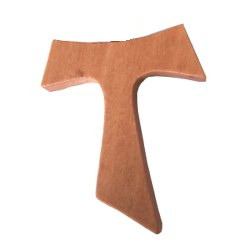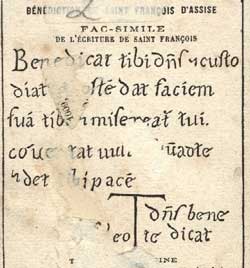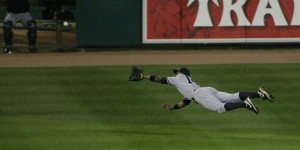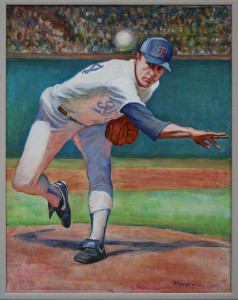From the New York Times Crossword puzzle, August 15, 2015
15 Across Symbol of the Franciscan order
Now, I did know that St. Francis of Assisi founded the Franciscan order, but a symbol? Well, a few minutes of research revealed the answer: the Tau cross. It seems self-explanatory that a priest would use a cross as his symbol, but the Tau cross has a great deal more meaning – particularly for the Franciscans.
Tau is the last letter of the Hebrew alphabet and was used by the prophet Ezekiel in 9:4: “Go through the city of Jerusalem and put a TAU on the foreheads of those who grieve and lament over all the detestable things that are done in it.” So the Tau symbol predates St. Francis by several centuries.
It was at the Fourth Latern Council where Pope Innocent spoke of the Tau cross using the quote from Ezekiel and also stated that it was the shape of the cross on which Christ was crucified. From that point on, Francis used it as his coat of arms and signed using the Tau and wrote it on the doors and places where he stayed.Also of interest is the fact that the cross is traditionally made of wood. Why wood? Well, it is flexible and responsive as the Christian should be to the word of God.
Council where Pope Innocent spoke of the Tau cross using the quote from Ezekiel and also stated that it was the shape of the cross on which Christ was crucified. From that point on, Francis used it as his coat of arms and signed using the Tau and wrote it on the doors and places where he stayed.Also of interest is the fact that the cross is traditionally made of wood. Why wood? Well, it is flexible and responsive as the Christian should be to the word of God.
St. Bonaventure said, “This TAU symbol had all the veneration and all the devotion of the saint: he spoke of it often in order to recommend it, and he traced it on himself before beginning each of his actions.”
One of the better known stories of St. Francis was his blessing of Brother Leo, in which Francis wrote on parchment, “May the Lord bless you and keep you! May the Lord show H is face to you and be merciful to you! May the Lord lift up His countenance upon you and give you peace! God bless you Brother Leo!” Francis sketched a head (of Brother Leo) and then drew the TAU over this portrait.
is face to you and be merciful to you! May the Lord lift up His countenance upon you and give you peace! God bless you Brother Leo!” Francis sketched a head (of Brother Leo) and then drew the TAU over this portrait.




 more miraculously, win the World Series. What made this turnaround so amazing is that it was due in large part to two catches by Agee.
more miraculously, win the World Series. What made this turnaround so amazing is that it was due in large part to two catches by Agee.

